第54章 MONEY OR SIMPLE CIRCULATION(35)
When payments cancel one another as positive and negative quantities,no money need actually appear on the scene.Here money functions merely as measure of value with respect to both the price of the commodity and the size of mutual obligations.Apart from its nominal existence,exchange-value does not therefore acquire an independent existence in this case,even in the shape of a token of value,in other words money becomes purely nominal money of account.Money functioning as means of payment thus contains a contradiction:on the one hand,when payments balance,it acts merely as a nominal measure;on the other hand,when actual payments have to be made,money enters circulation not as a transient means of circulation,but as the static aspect of the universal equivalent,as the absolute commodity,in short,as money.Where chains of payments and an artificial system for adjusting them have been developed,any upheaval that forcibly interrupts the flow of payments and upsets the mechanism for balancing them against one another suddenly turns money from the nebulous chimerical form it assumed as measure of value into hard cash or means of payment.Under conditions of advanced bourgeois production,when the commodity-owner has long since become a capitalist,knows his Adam Smith and smiles superciliously at the superstition that only gold and silver constitute money or that money is after all the absolute commodity as distinct from other commodities --money then suddenly appears not as the medium of circulation but once more as the only adequate form of exchange-value,as a unique form of wealth just as it is regarded by the hoarder.The fact that money is the sole incarnation of wealth manifests itself in the actual devaluation and worthlessness of all physical wealth,and not in purely imaginary devaluation as for instance in the Monetary System.This particular phase of world market crises is known as monetary crisis.The summum bonum ,the sole form of wealth for which people clamour at such times,is money,hard cash,and compared with it all other commodities --just because they are use-values --appear to be useless,mere baubles and toys,or as our Doctor Martin Luther says,mere ornament and gluttony.This sudden transformation of the credit system into a monetary system adds theoretical dismay to the actually existing panic,and the agents of the circulation process are overawed by the impenetrable mystery surrounding their own relations.[6]
Payments in their turn necessitate reserve funds,accumulations of money as means of payment.The formation of reserve funds,unlike hoarding,no longer seems an activity extraneous to circulation,or,as in the case of coin reserves,a purely technical stagnation of coin;on the contrary money has to be gradually accumulated so as to be available at definite dates in the future when payments become due.Although with the development of bourgeois production,therefore,the abstract form of hoarding regarded as enrichment decreases,the form of hoarding necessitated by the exchange process itself increases;a part of the wealth which generally accumulates in the sphere of commodity circulation being drawn into reserve funds of means of payment.The more advanced is bourgeois production,the more these funds are restricted to the indispensable minimum.Locke's work on the lowering of the rate of interest [7]contains interesting information about the size of these reserve funds in his time.It shows how substantial a proportion of the money in circulation in England was absorbed by the reserves of means of payment precisely during the period when banking began to develop.
The law regarding the quantity of money in circulation as it emerged from the examination of simple circulation of money is significantly modified by the circulation of means of payment.If the velocity of money,both as means of circulation and as means of payment,is given,then the aggregate amount of money in circulation during a particular period is determined by the total amount of commodity-prices to be realised [plus]the total amount of payments falling due during this period minus the payments that balance one another.This does not affect at all the general principle that the amount of money in circulation depends upon commodity-prices,for the aggregate amount of payments is itself determined by the prices laid down in the contracts.It is however quite obvious that the aggregate prices of the commodities in circulation during a definite period,say a day,are by no means commensurate with the volume of money in circulation on the same day,even if the velocity of circulation and the economic methods of payment are assumed to remain unchanged;since a certain quantity of commodities is in circulation whose prices will only be realised in money at a later date,and a certain amount of money in circulation corresponds to commodities which have left the sphere of circulation a long time ago.This amount of money depends in its turn on the value of the payments that fall due on this day,although the relevant contracts were concluded at widely varying dates.